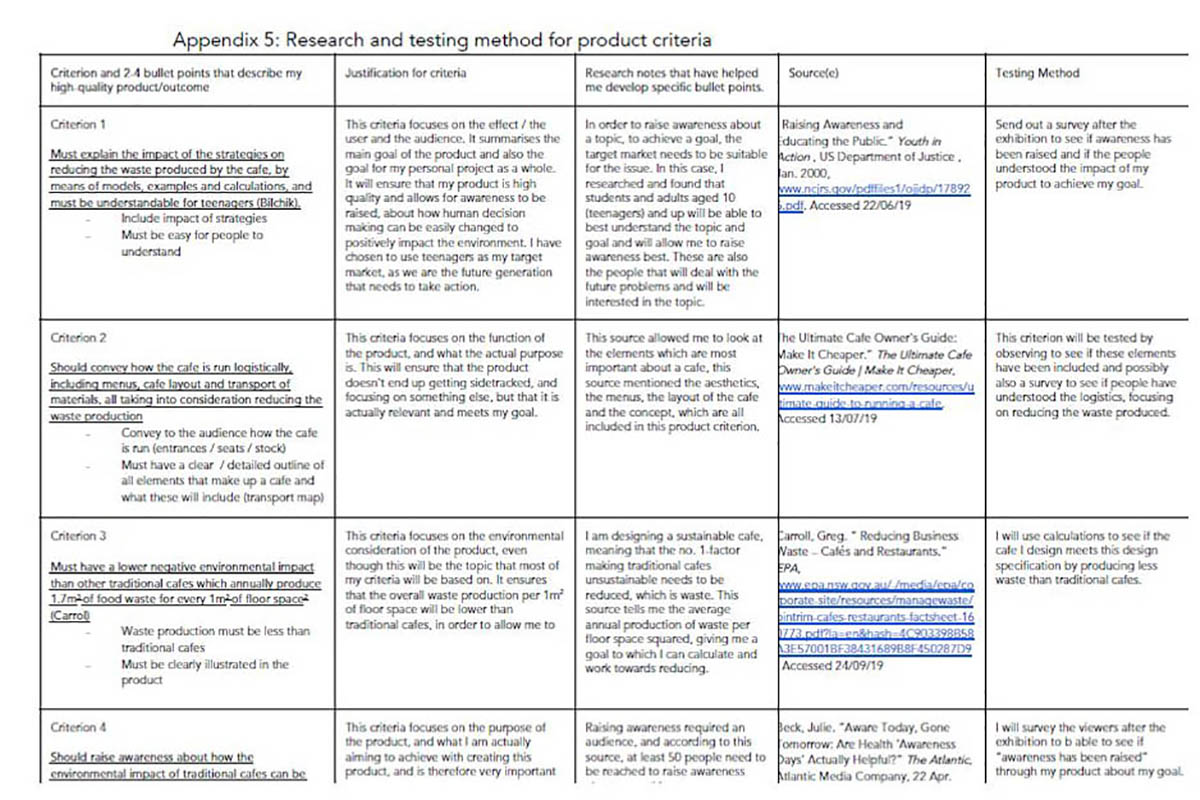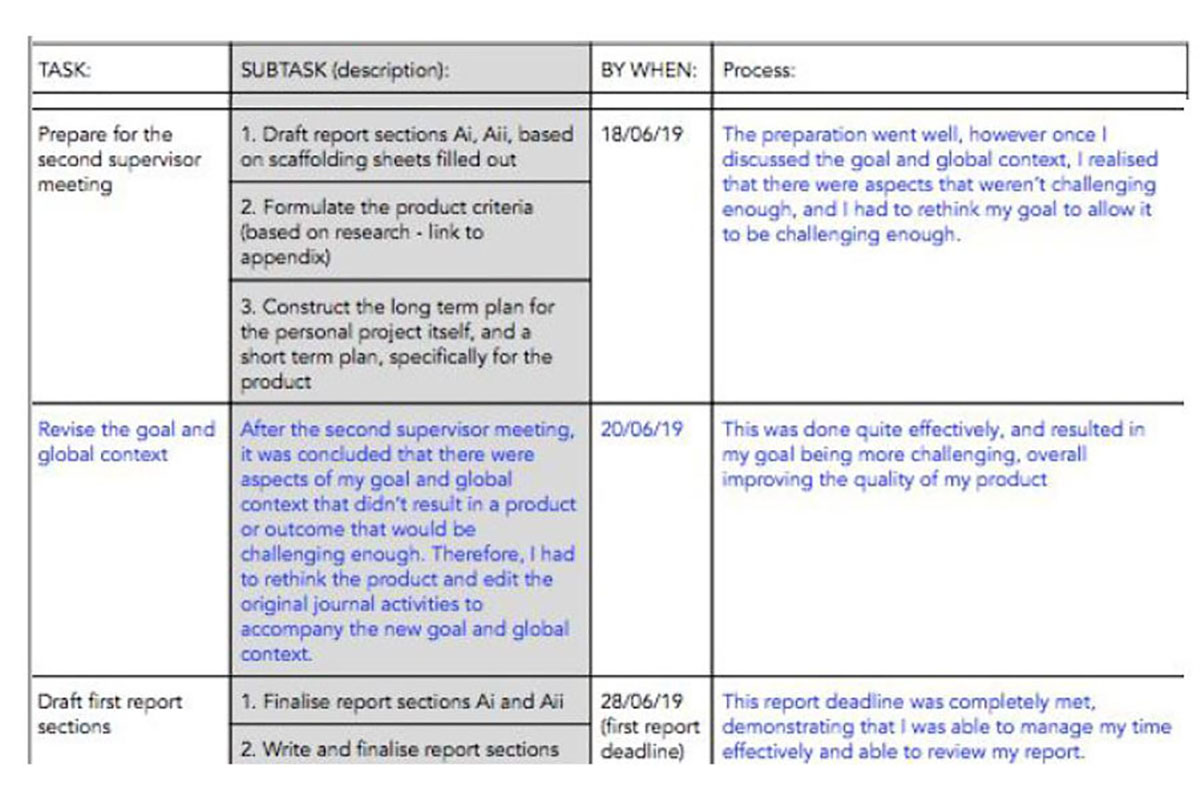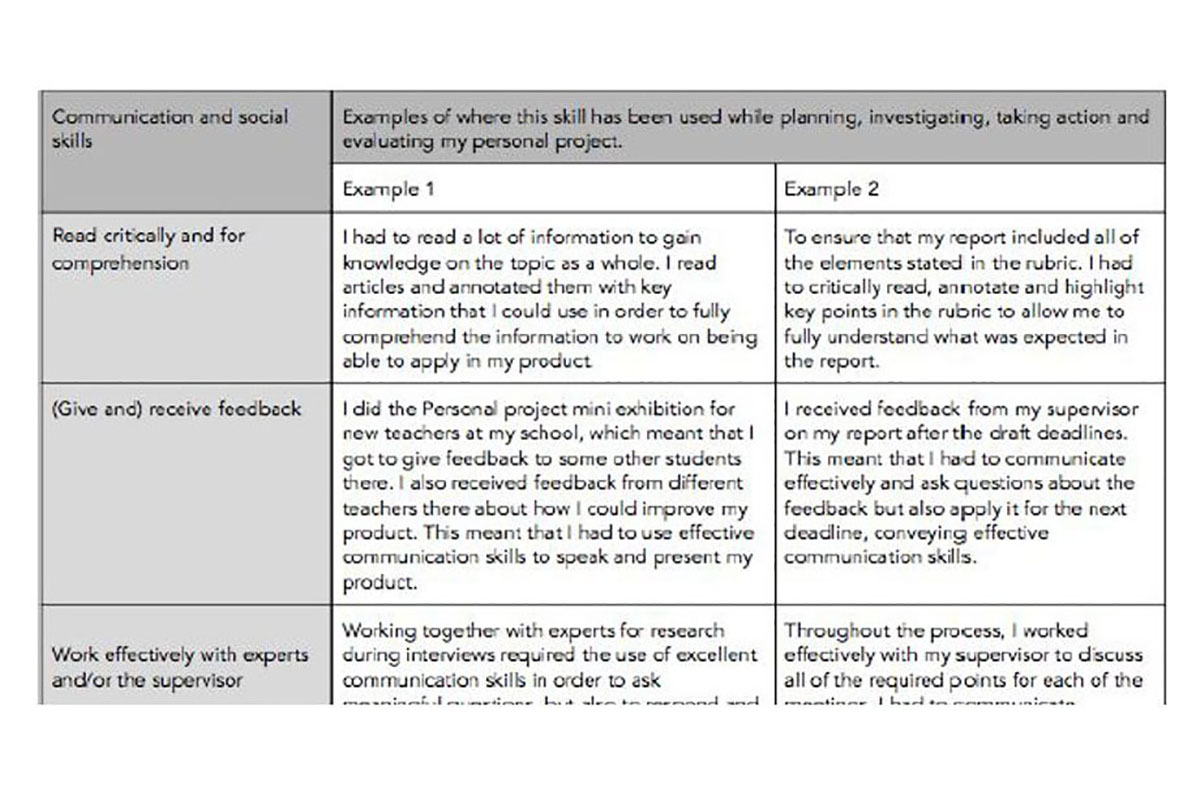To support Middle Years Programme (MYP) year five schools with resources for education continuity during the COVID-19 (Coronavirus) pandemic, IB examiners take a look at some successful MYP personal projects and illustrate how candidates can achieve the highest descriptor of the assessment criteria.

Each examination session always includes a wealth of fantastic personal projects. Many of them demonstrate creative ideas that are brought to realization with wonderful outcomes, and at the same time, achieving excellent levels against the assessment criteria. This year, the COVID-19 (Coronavirus) pandemic did not stand in the examiner teams way of receiving a large number of successful projects. One of them illustrates how a candidate effectively reached the highest descriptors of the criteria. The candidate’s idea behind the project was to design an environmentally sustainable café and a few selected strands of the assessment criteria, where the candidate demonstrated excellent achievement, have been highlighted below from an examiner’s perspective.
Product criteria
The candidate stated in the report that “In order to construct the product criteria, I had to research what types of elements my product needed to include”. To reach the higher levels of strand Bi, candidates need to use their research skills when developing criteria for their product/outcome. Their decision of which criteria to use (and level of detail required) to assess their product/outcome should also be based on research.

Figure 1: Product criteria and the justification/research supporting each criterion.
In this project, the candidate clearly showed that her/his product criteria were explicitly informed by research, as seen in Figure 1. The first column illustrates the criteria used to evaluate the product, the second column shows the researched information used to create each criterion and the third column shows references to the sources of information. The candidate clearly modeled how their product criteria was explicitly informed by research.
Task-specific clarifications
The table that included the product criteria also successfully addressed other task-specific clarifications needed to reach a level seven/eight. For example, one column of the table included justification for each criterion, communicating why each specific criterion was suitable for evaluating the intended product. The column including the actual product criteria had several descriptors with a few bullet points underneath, mapping out details like the product needing ‘‘to be of high quality’’. The work represented a good example of criteria tailored specifically with the goal and global context in mind, rather than filling in a one size fits all template for product criteria.

Figure 2: Task and subtasks for the project.
As defined in the task-specific clarifications of the assessment criteria, the plan for the project is the intended course of action with time and resources. Within the report, the candidate clearly referenced appendices including evidence of the plan and subsequent process. In one of these appendices, it could be seen that the candidate had used a table which detailed tasks and connected subtasks. These tasks were directly related to the candidate’s project and the subtasks gave good examples of the logical steps needed to successfully complete the goal. Providing specific dates to each subtask demonstrated when they needed to be completed. The section of the table, including subtasks, also showed any adjustments that were made to the timeline.
The task-specific clarifications states that the record of the development process is to record the actions taken as directed by the plan, and with any modifications shown. This was clearly evidenced by the candidate, as seen in Figure 2. The table also included a column with the heading “Process”. It was aligned with the plan and clearly described the process from start to finish, including changes, which were clear and justified. This column also included an evaluation of the steps taken, adding to the detail of the process.
Analysis and Evaluation
To reach the highest descriptor band in criterion Ciii, candidates need to provide an “analysis and evaluation” of the content described in the task-specific clarifications of the assessment criteria. In the report, there was a clear example of evaluation of communication skills and the candidate presented this clearly by expressing that, “I could have further demonstrated my communication skills through…”, followed by specific examples. This was an instance where the candidate clearly indicated to the reader of the report that she/he not only analyzed how the specific approaches to learning (ATL) skill was demonstrated, but also added an evaluative element as a conclusion to the account.

Figure 3: Candidate’s evaluation of communication and social skills.
Evidence of criterion Di was an evaluation of the product, placed in the report’s appendices and referenced to by the candidate, and in the evaluation, all of the product criteria were analyzed. The analysis interpreted information from a survey conducted, to reach a conclusion about the quality of the product. It also brought out essential elements of the criteria using multiple examples and evaluated their effectiveness in reaching or not reaching the stated criteria.

Download the personal project subject reports to get insight into how candidates have performed in the previous examination sessions and get recommendations from IB examiners on how to teach future candidates.
If you enjoyed this story, consider reading more below:



